EFUD votes 208-69 to sell 51 South Main Street
Oct. 31, 2022 | By Lisa ScagliottiIt was standing room only upstairs at the Main Street fire station for the Oct. 25 meeting and vote. Photo by Gordon Miller
By a 3-to-1 margin, voters in Waterbury’s Edward Farrar Utility District gave a resounding “yes” to selling the lot at 51 South Main Street to be developed for affordable housing.
Close to 300 people packed the upstairs community room at the Main Street fire station last Tuesday, Oct. 25, for an in-person meeting to decide whether the nonprofit organization Downstreet Housing & Community Development should write the next chapter in the story of a key piece of downtown real estate.
After presentations, questions, discussion, and a long line to check in with the town clerk and mark a paper ballot, Town Clerk Karen Petrovic assisted by former Town Clerk Carla Lawrence counted the votes.
Because the utility district’s charter dictates such matters be decided in a town-meeting format, the gathering was convened and state representative Tom Stevens, who resides in the district, was named moderator for the evening.
Many had left by the time Stevens announced the results two hours later: 277 votes with 208 voting yes, 69 no.
Stevens thanked those remaining for a civil and respectful gathering. “This was an important step forward in this project if it works out,” he said.
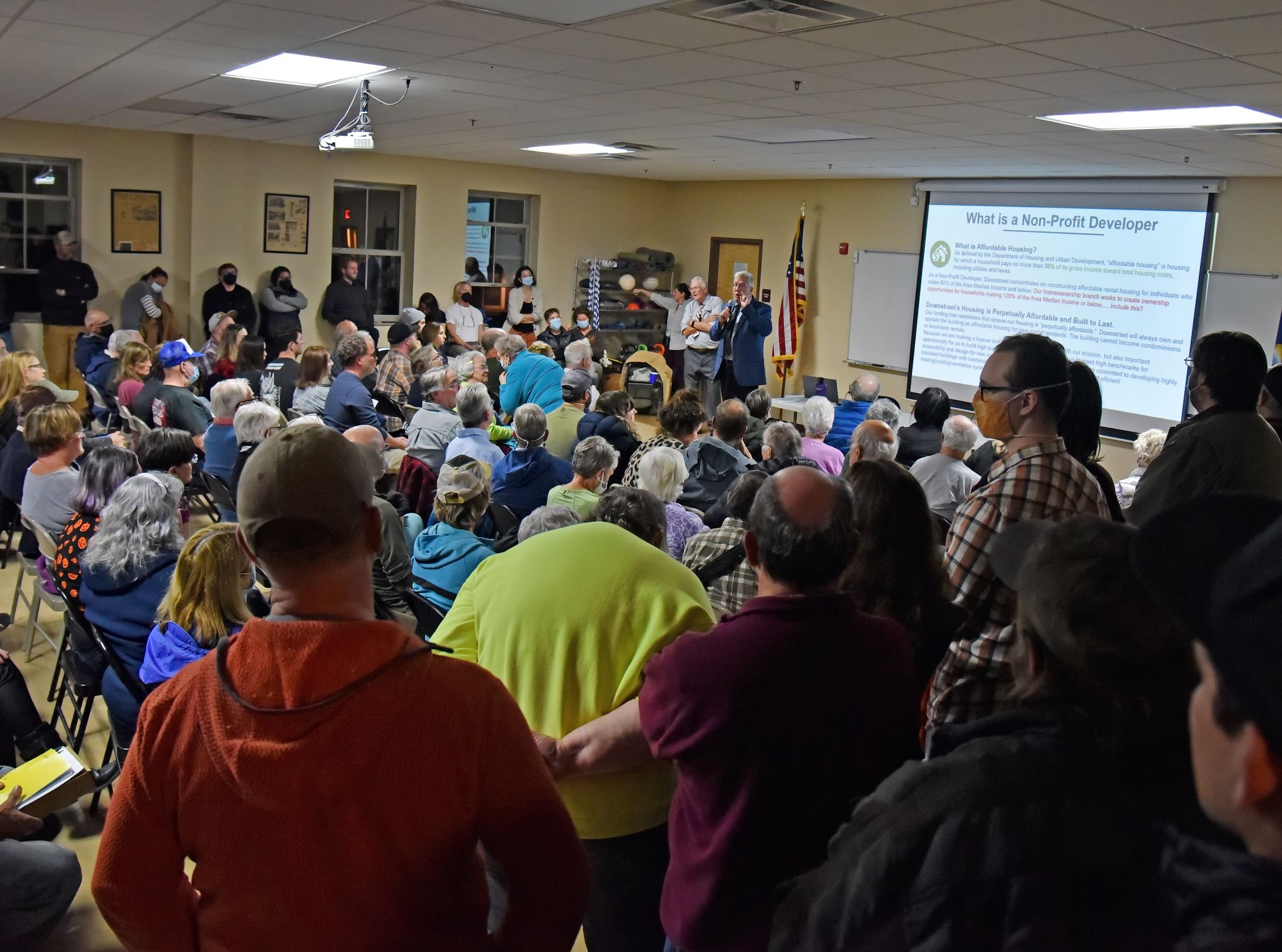
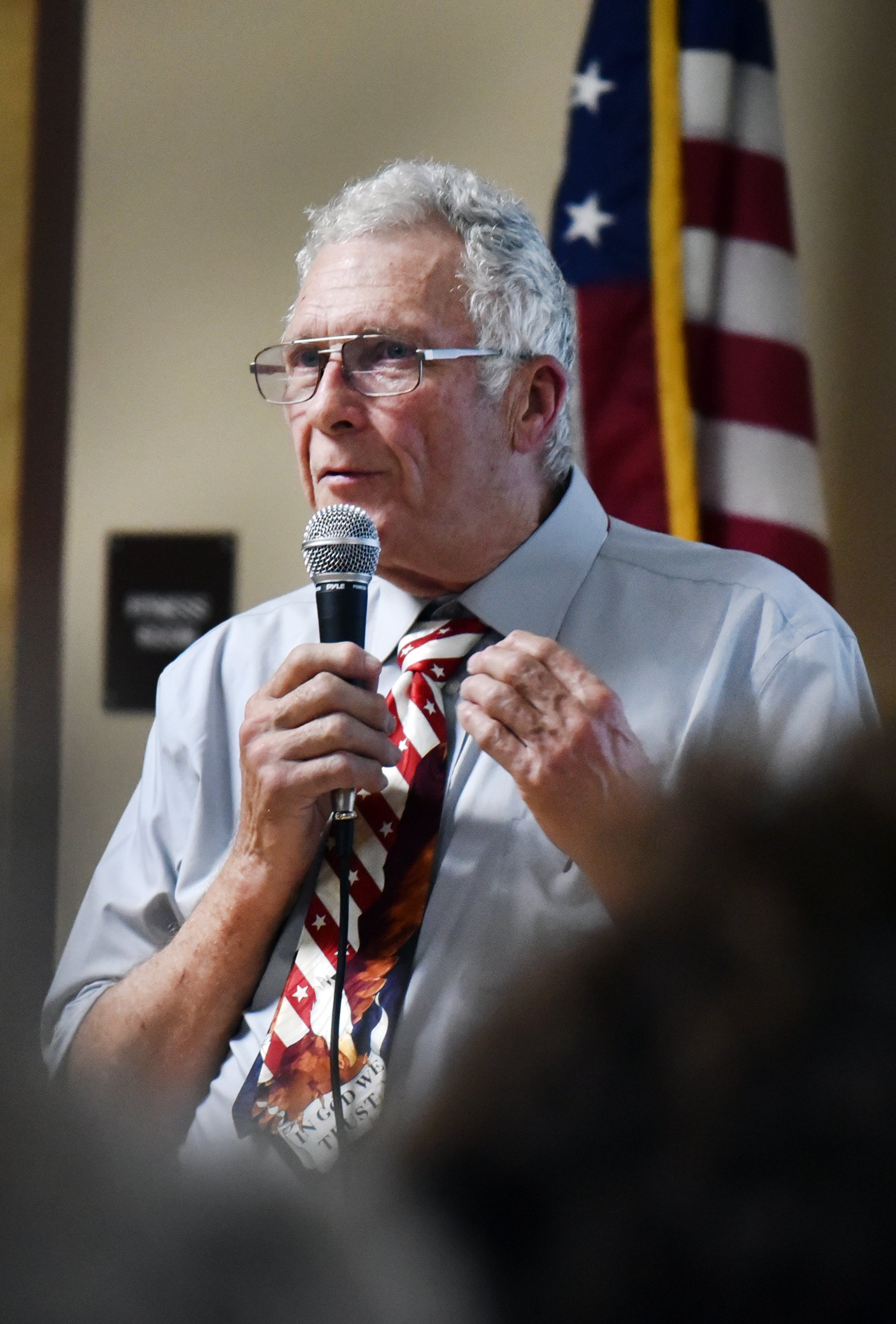
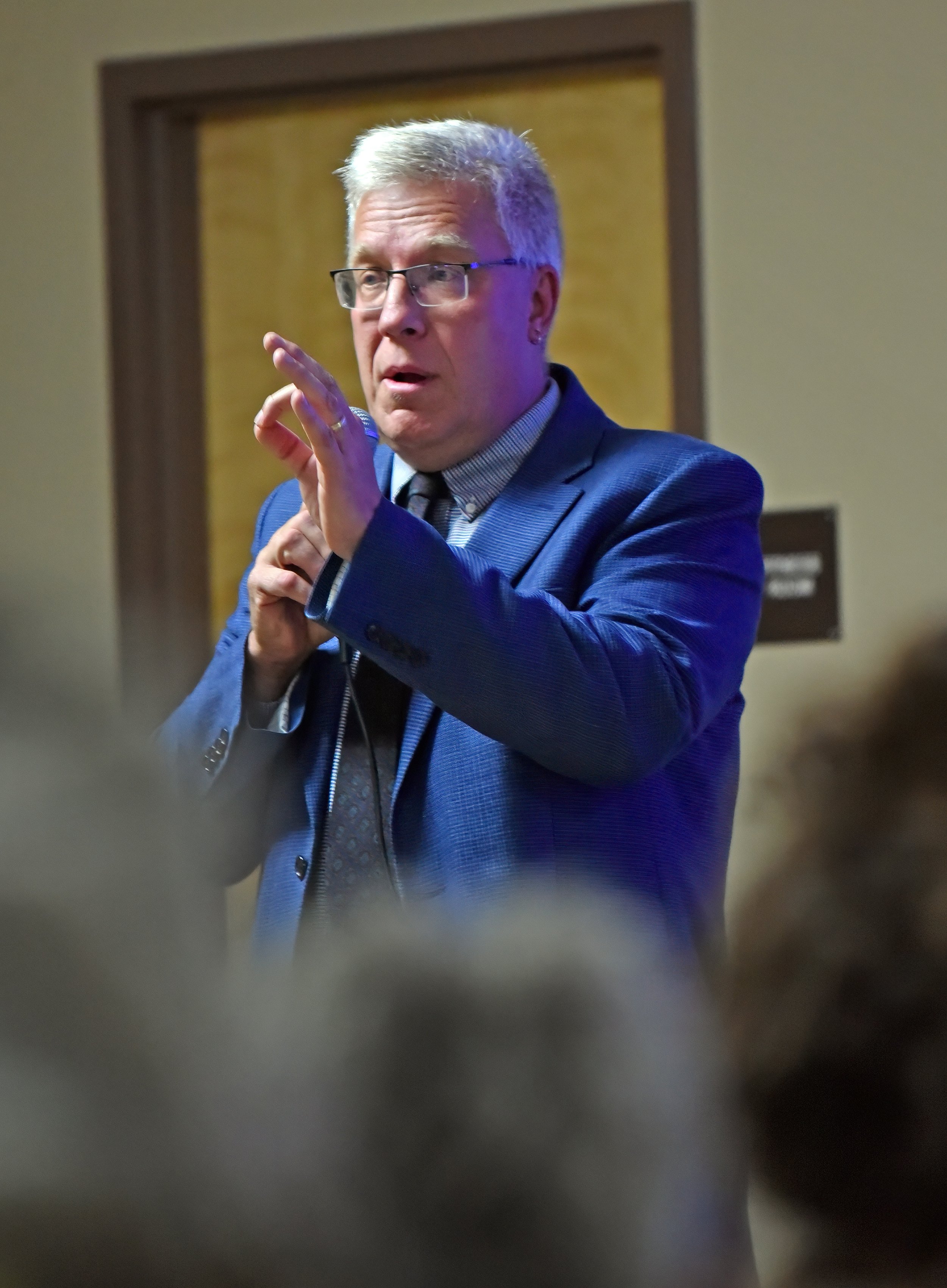
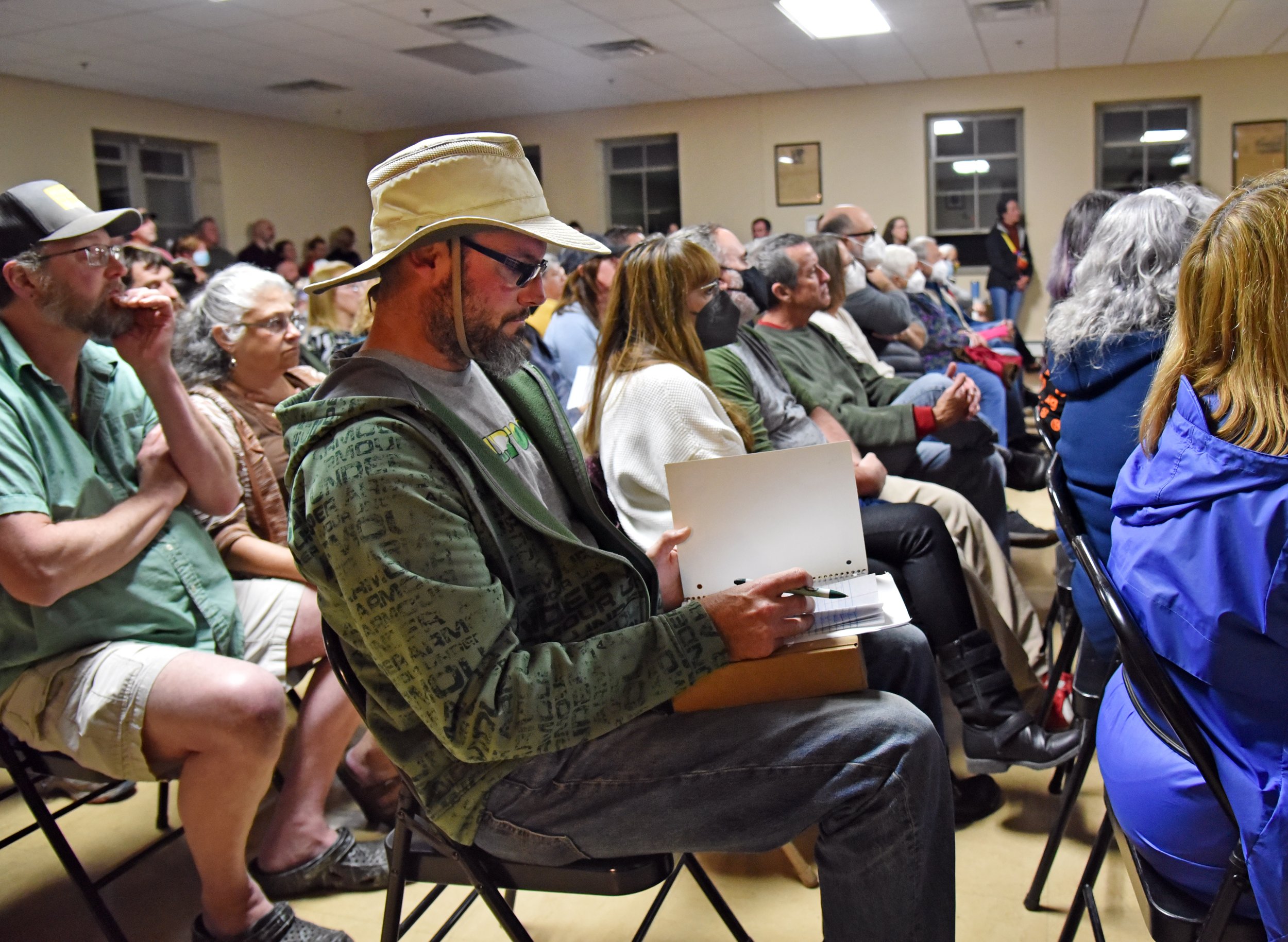
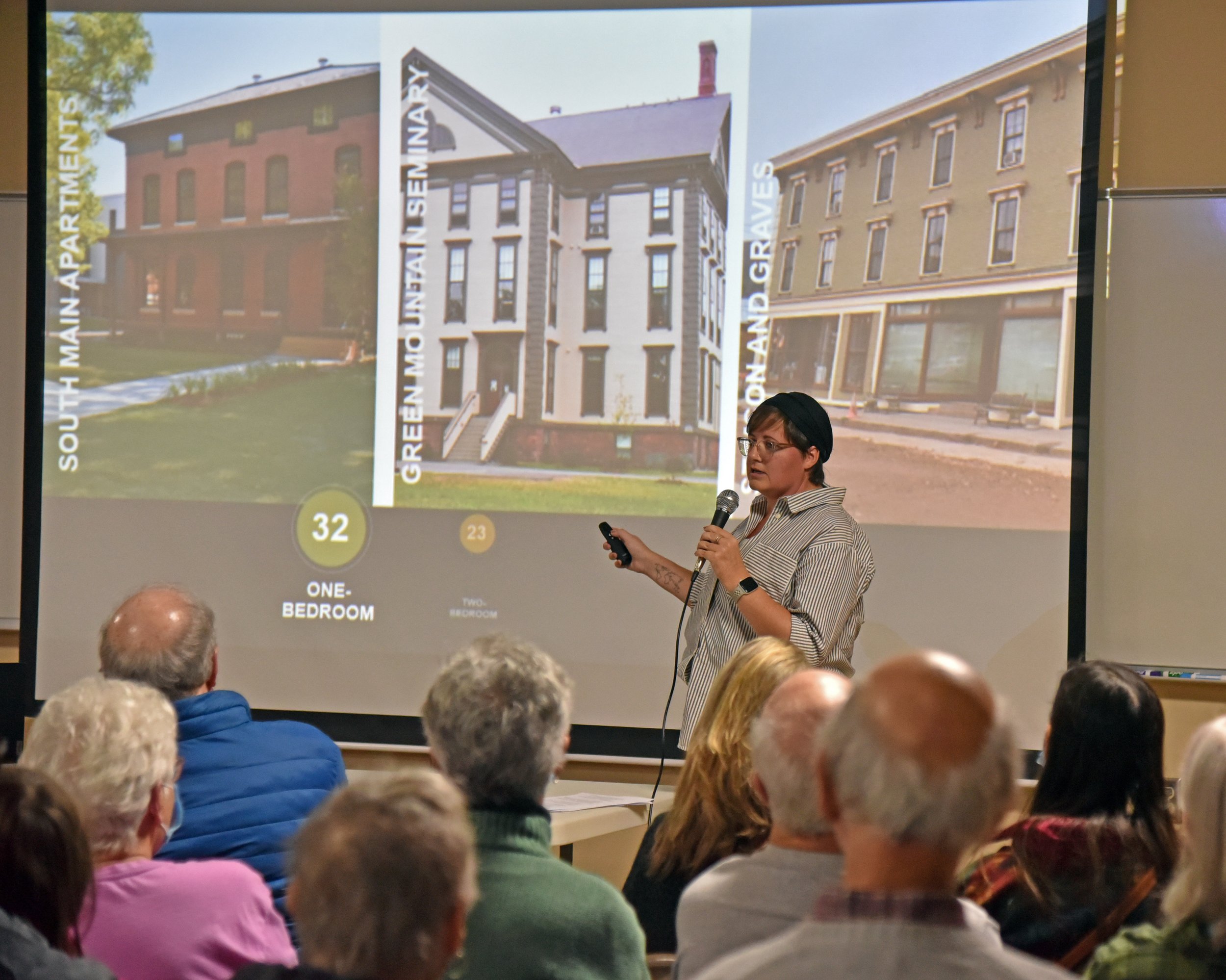
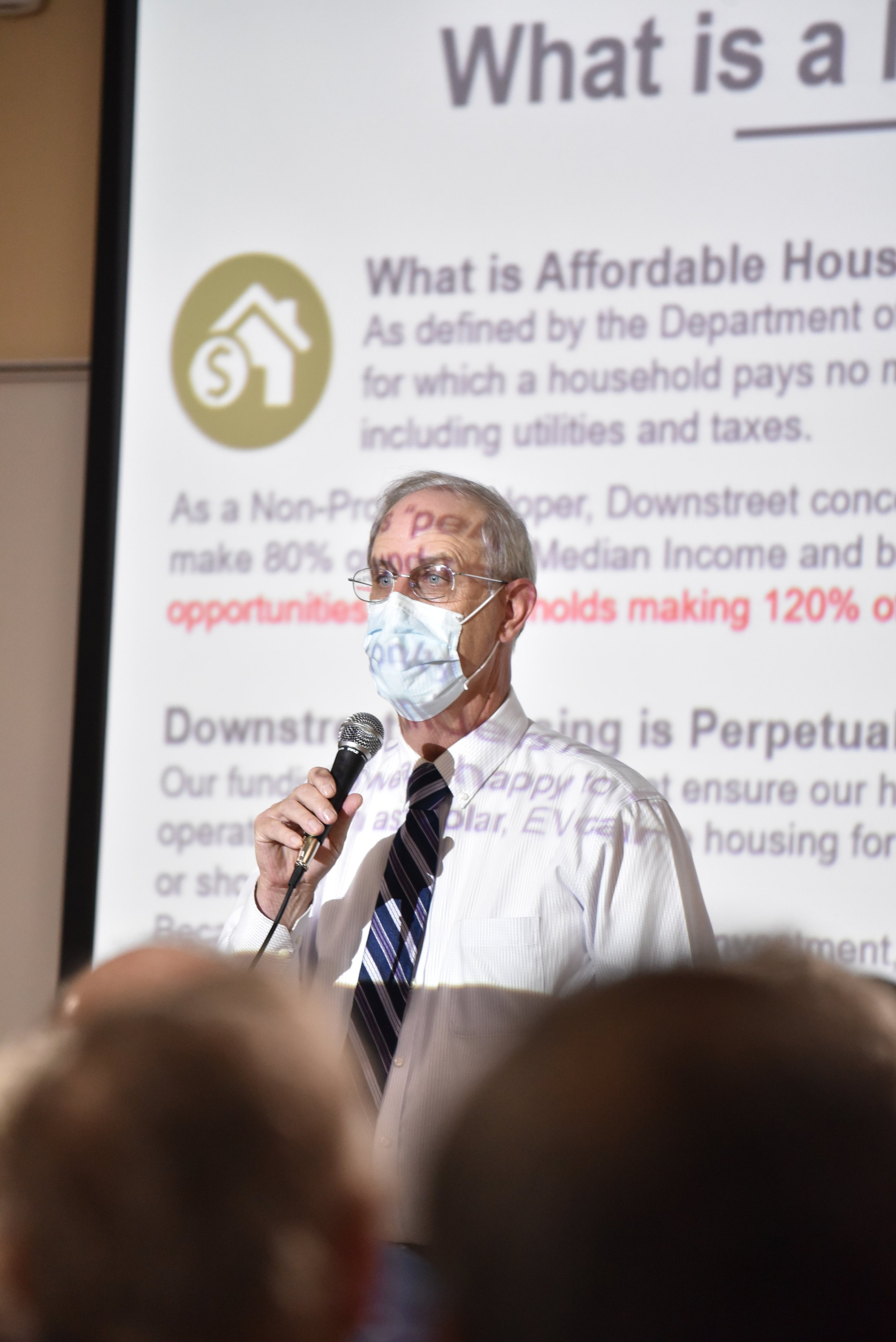
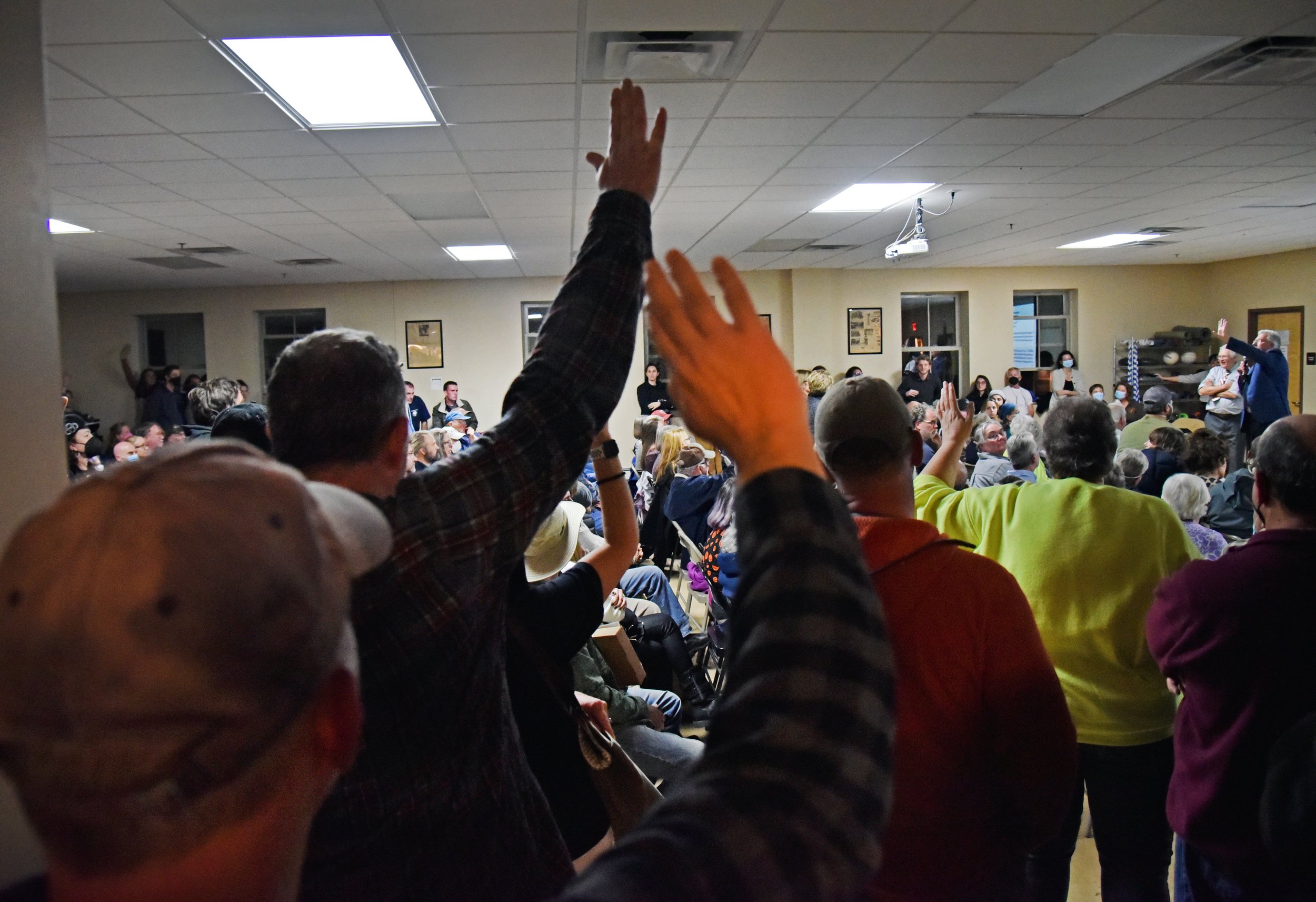
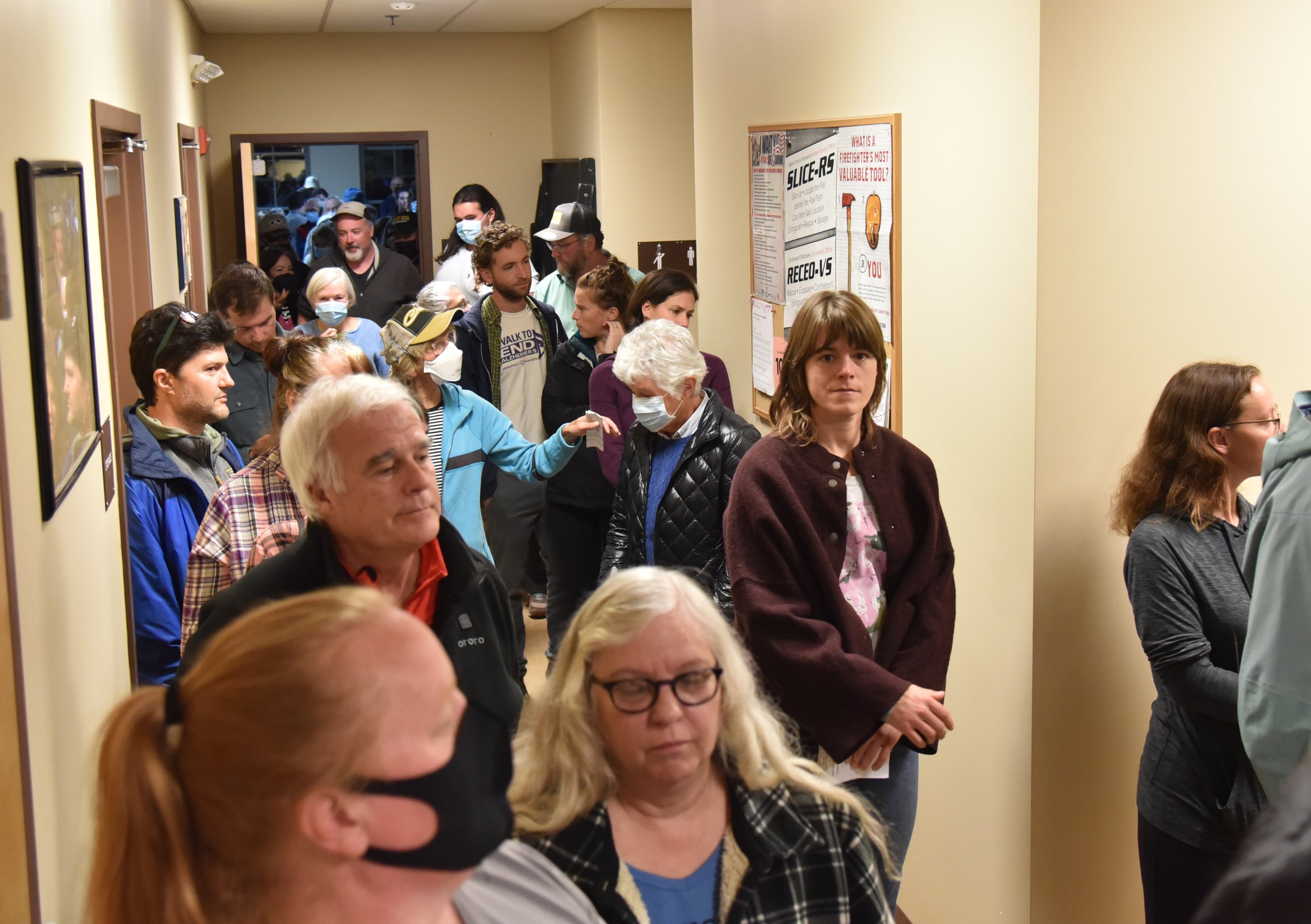

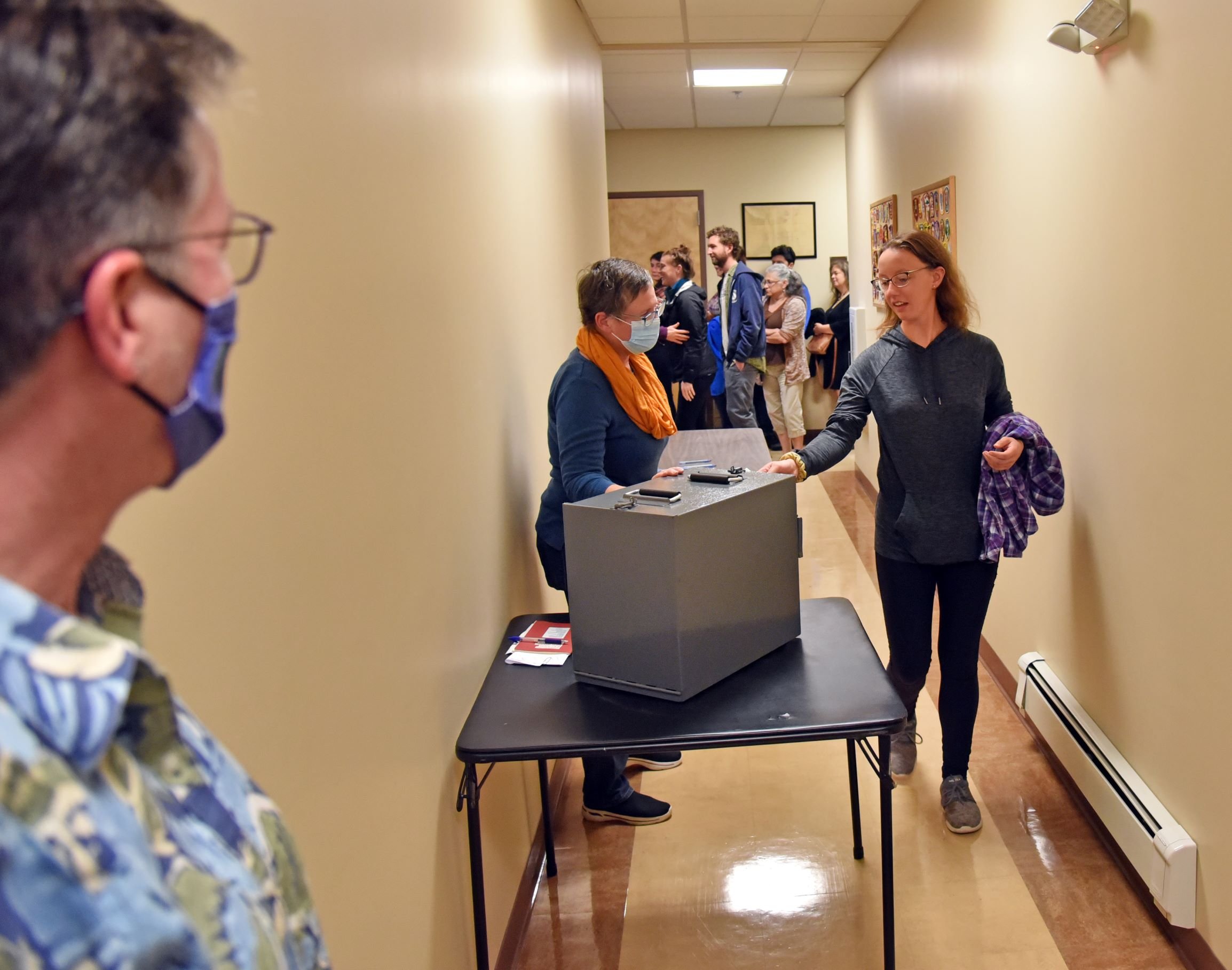
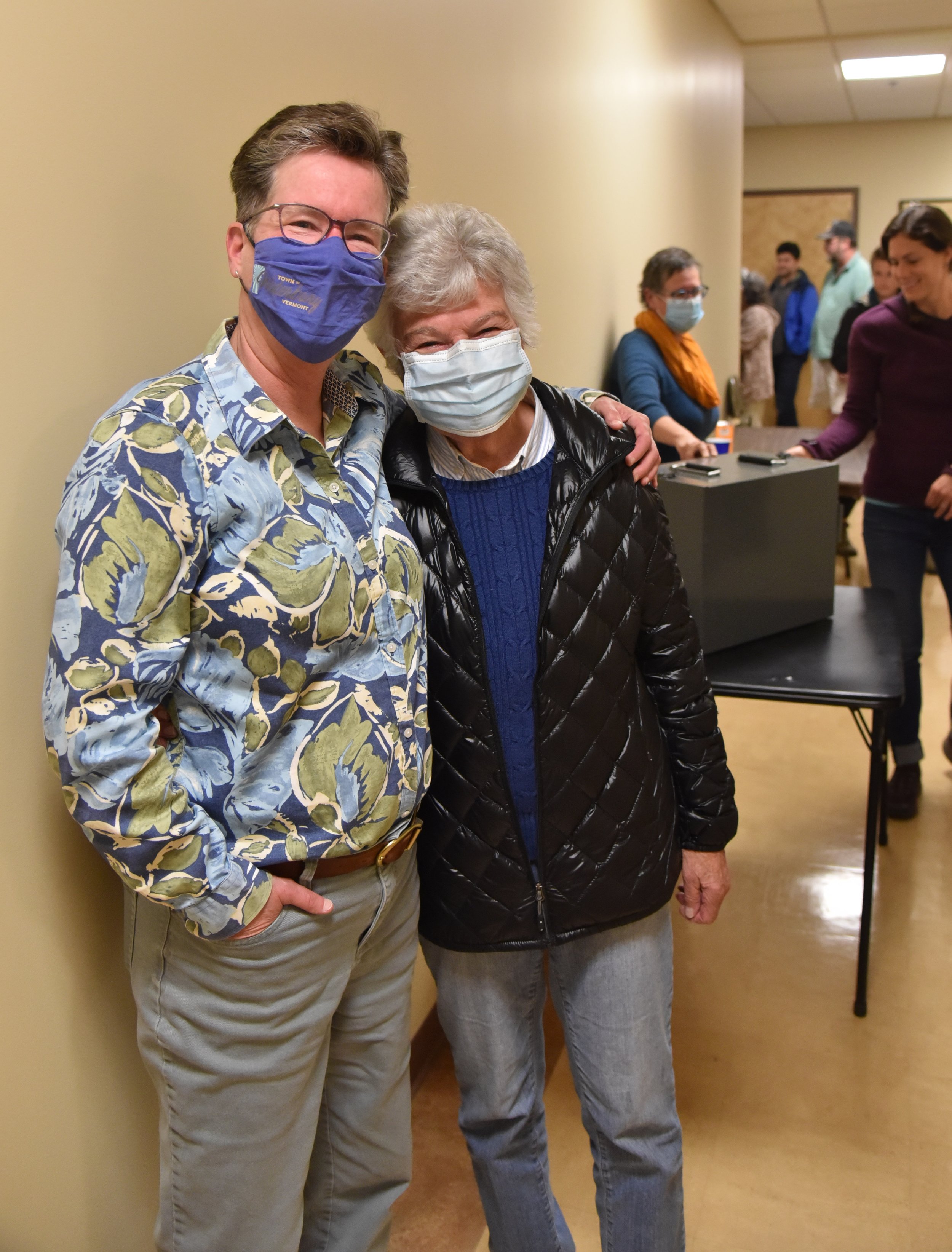
Next, the details
Next steps are not guaranteed but Downstreet’s Director of Real Estate Development Nicola Anderson said her organization is looking ahead to building on the property by 2024.
Between now and then, there is a real estate transaction to complete – the vote authorizes the utility district to sell the .8-acre lot for $138,000. The organization had hoped to meet November deadlines to apply for federal grant funding for the project but the timeline is too tight. Applying in the first quarter of 2023 is the target now, she said.
Downstreet will also get working on a detailed study of the property to inform design plans to site a three-story building on the lot with approximately 24 studio, one- and two-bedroom apartments, she said. At the behest of public comment during informational meetings leaving up to the vote, the firm will also look to incorporate commercial space on the street level, she noted.
If all goes as planned, the development will replace what is now a parking lot created in 2019 when the building, formerly the municipal offices and village police headquarters, was razed after it sustained significant flooding damage from Tropical Storm Irene in 2011.
When the village government was dissolved and the utility district created in 2018, ownership of the property remained with EFUD. The district has been divesting of its real estate this year with other properties recently transferred to the town including Rusty Parker Memorial Park, the recreation lands near the Ice Center, and a parking lot on Elm Street.
In the years soon after Irene, requests for development proposals attracted some interest from builders but none that gained traction to move ahead. Last year, utility district trustees returned to the topic acknowledging a need for more affordable housing in town and a key goal in the municipal plan to grow housing opportunities.
That led them to approach Downstreet, the Barre-based developer and manager of affordable housing including three locations in Waterbury already — apartments on South Main near the State Complex, the Stimson-Graves building and the Green Mountain Seminary Apartments in Waterbury Center.
Downstreet’s lack of vacancies at those locations motivated them to look at a new location, Anderson said. “People who want to work in Waterbury need a place to live,” she said. “We need more housing units in Waterbury of all types.”
Anderson explained that “affordable” means that tenants will not pay more than 30% of their income for rent and utilities. It also means the units will not be sold for profit. “These are guaranteed to be rental units for life.”
In public informational meetings about the project in August and early October, some local residents were critical of the proposed size for the project, its possible layout and potential impacts on adjacent properties such as casting shadows on rooftop solar panels.
EFUD and Downstreet officials noted that designs are still very preliminary, need to be refined and go through the local development review process which will include public participation.
“There’s still a year or so of process,” Anderson told the crowd. “There’s a lot for you to be part of in that discussion.”
One of the most vocal opponents of the project was village resident and electrical contractor Todd Volitis who expressed interest in purchasing the property himself. Frustrated with the EFUD board’s plans to pursue a sale to Downstreet exclusively, he mounted a “Vote No” campaign with signs around the downtown. His visuals included a construction trailer bearing that message along with slogans to “Rock the Vote” and “Show Up.”
His activism sparked more interest among others opposed to the project, but soon supporters were making and getting signs printed. As a result, despite a General Election around the corner, signs for and against the 51 S. Main proposal have been plentiful in downtown Waterbury in recent weeks.
During the discussion portion of Tuesday’s meeting, Volitis stood up and spoke briefly telling his neighbors that there is another proposal for the property.
“There are other options,” he said.
Stevens reminded the group that the meeting and the vote were to decide the question of whether or not to sell to Downstreet. Only if that failed could other offers be considered.
Municipal Manager Bill Shepeluk noted that a sale agreement would likely have a date by which Downstreet would be expected to move ahead with development. “If something precludes the project from going forward by a date certain,” he said, the property could potentially revert back to the utility district.
Some questions focused on taxes and Shepeluk assured voters that Downstreet pays property taxes on its existing developments in town.
Others questioned the potential size of the building and asked if the sale could put development requirements on the property. “It just feels a little bit too big to me to feel comfortable in this neighborhood,” said Alex Cawley, a Randall Street resident.
Later, Anderson said design details and layouts will be done with input from the community will be welcome. “We want to fit in with the street and existing landscape,” she said. “We want it to feel a part of the community.”
Whitney Aldrich shared that her view had evolved from “no” to “yes” recently. She had hoped the spot would retain more green space than it may now. “But anyone we sell to would still have to conform to the rules,” she said. And current zoning allows for dense development along this part of Main Street. A for-profit buyer could build to the maximum density on the spot and create housing that may not be affordable, she said.
Town Clerk Karen Petrovic (left) and former Town Clerk Carla Lawrence (right) count ballots in the kitchen just off the meeting room at the fire station. Photo by Lisa Scagliotti
Standing room only
The meeting drew the largest crowd for the utility district ever and larger than anyone could recall for the village government that preceded it. Looking around the room as he took the microphone at the start of the meeting, Stevens said, “This is probably the last 15 village meetings combined.”
Anderson said she was moved by the turnout. “People are so passionate. This is truly so impressive. I’ve never seen this kind of turnout” for a project before, she said. “It shows how much people care about Waterbury.”
P. Howard “Skip” Flanders, who chairs the utility district’s Board of Commissioners, agreed. He said he was happy that the board held two informational meetings for the public to learn about the project and the process.
Although the board could have authorized the property sale on its own, it agreed a public vote was a better path to take, he said.
“The vote is an expression of support for the needs of the community,” Flanders said. “It’s in line with the goals of the town plan and our zoning. And now it will have to meet the requirements of the process to go through.”
While the outcome was not what Volitis had hoped for on the property sale, he said he was pleased to see the participation from the community. “If it’s a good turnout, it’s a success,” he said. “Then the decision is made by the people, not just a handful.”


